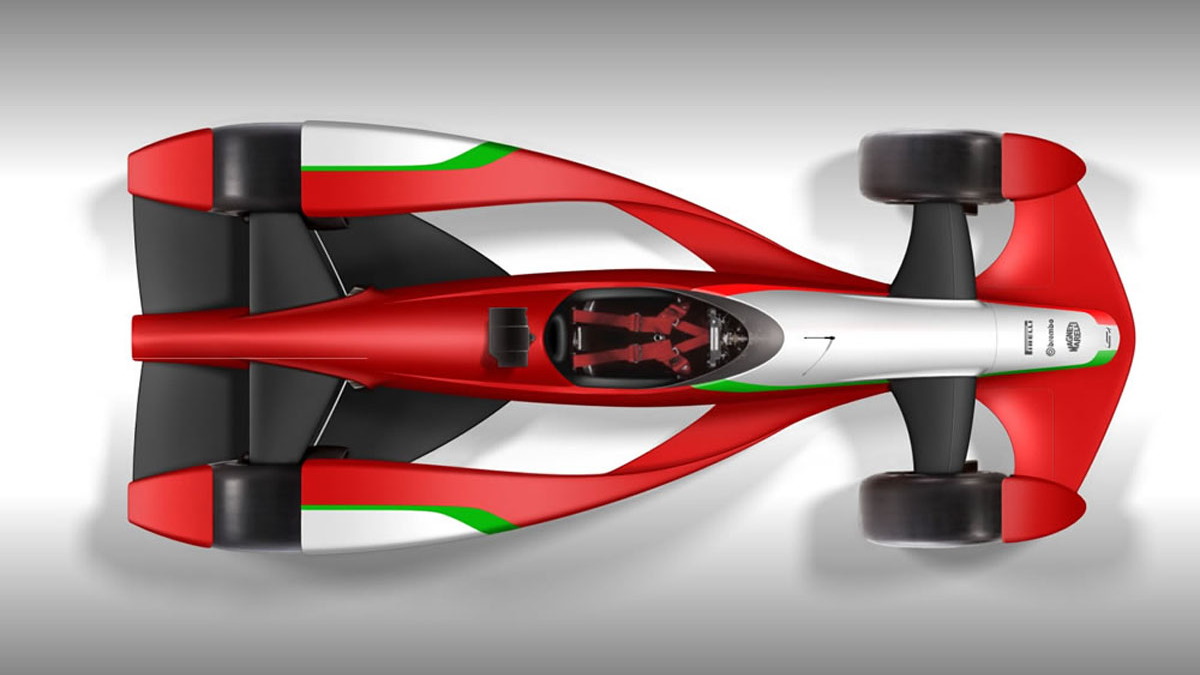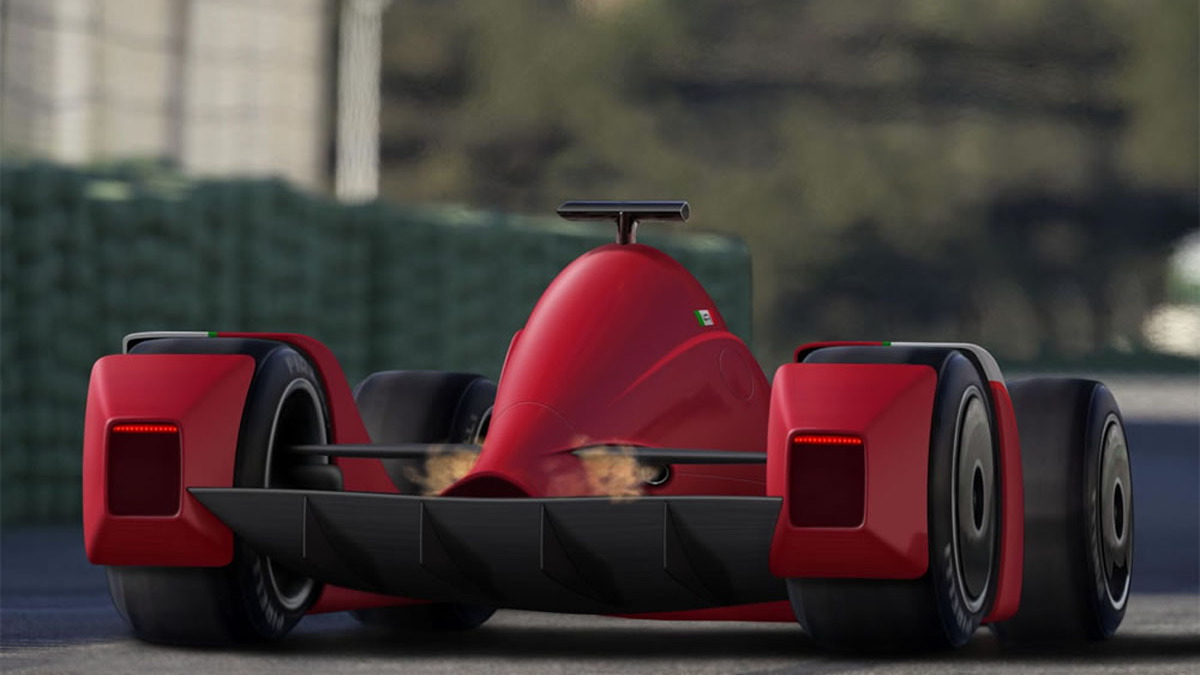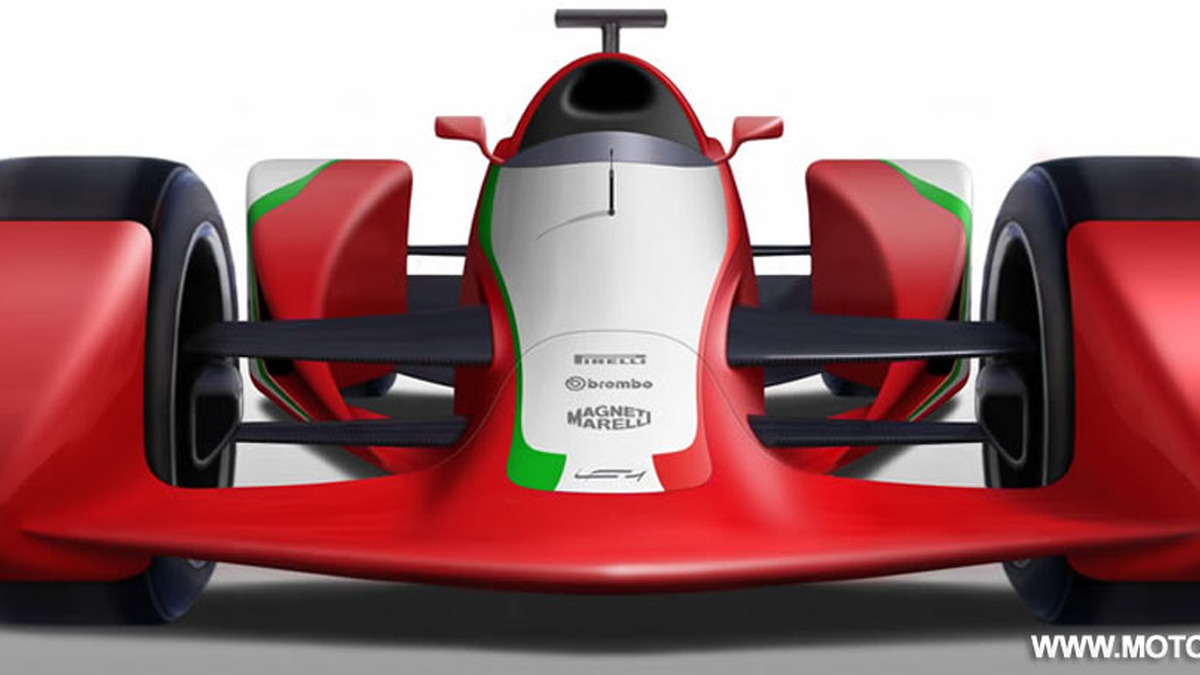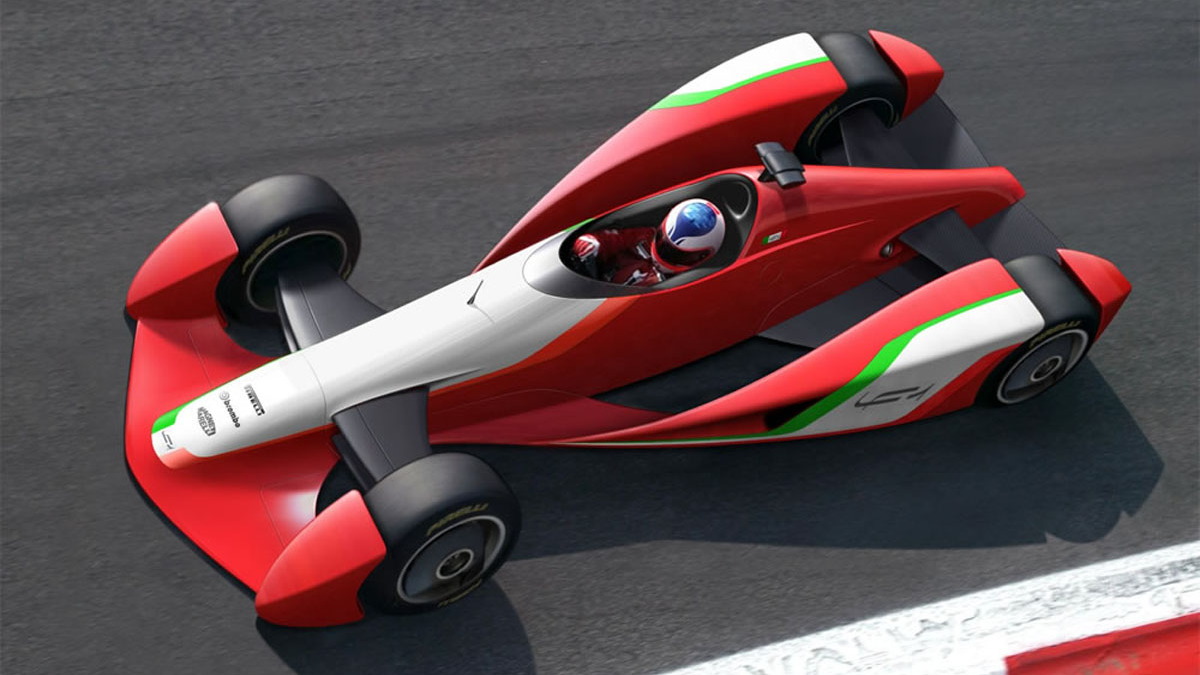For its LF1, Fioravanti took several design concepts from the world of F1 and implemented them in an attempt to bridge the gap between F1 research and production vehicles. While the LF1 hardly looks production ready, many of its design elements, such as its aerodynamic styling and lightweight construction techniques, could easily be applied to a production car.
In line with proposed regulations for the 2012 F1 season, the LF1 has been designed to house a 1.8L turbocharged engine. The small engine has allowed for an equally small body, which in turn provides less aerodynamic drag and turbulences. To further reduce drag, electric fans are used to cool the radiators and intercoolers instead of relying on conventional cooling air ducts.
A Kinetic Energy Recovery System (KERS) is also included in the design, as is 18in wheels housing braking systems similar to the ones utilized in the high performance road cars. The LF1’s measurements are length of 4,200mm, a height of 950mm, a width of 1,820mm and a wheelbase of 2,800mm.

The 2000 TRIS concept uses a single design for components such as its doors and lights to reduce costs
Development processes such as engineering, tooling, production, and assembly have all seen cost reductions. For example, all three of the TRIS’s doors – including the rear hatch – are identical. The same goes for the lights and bumpers.



